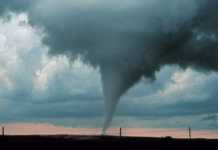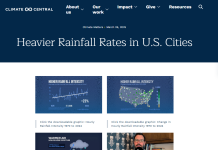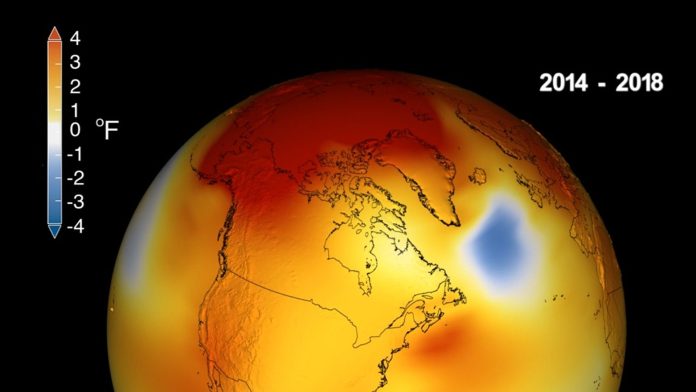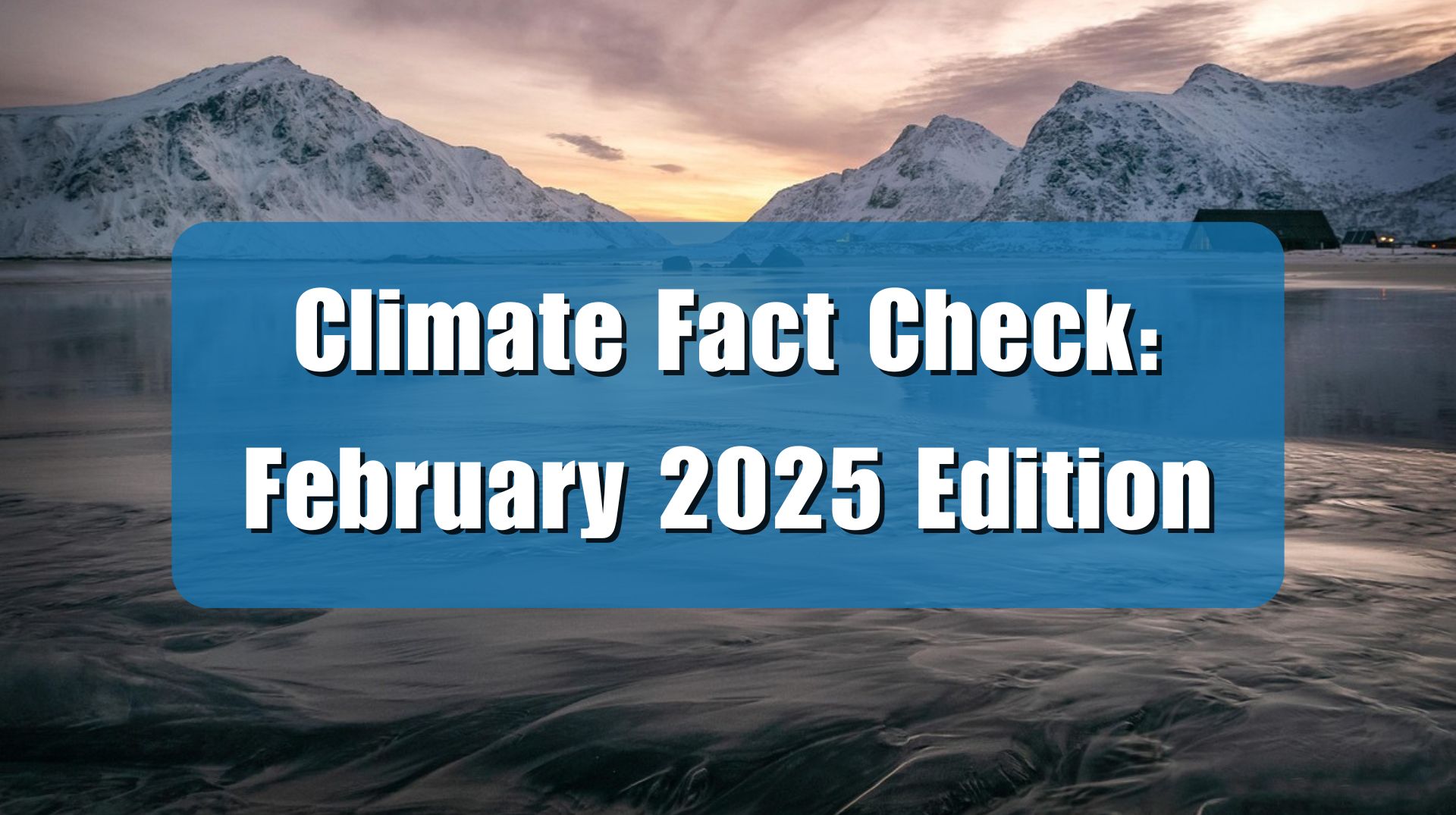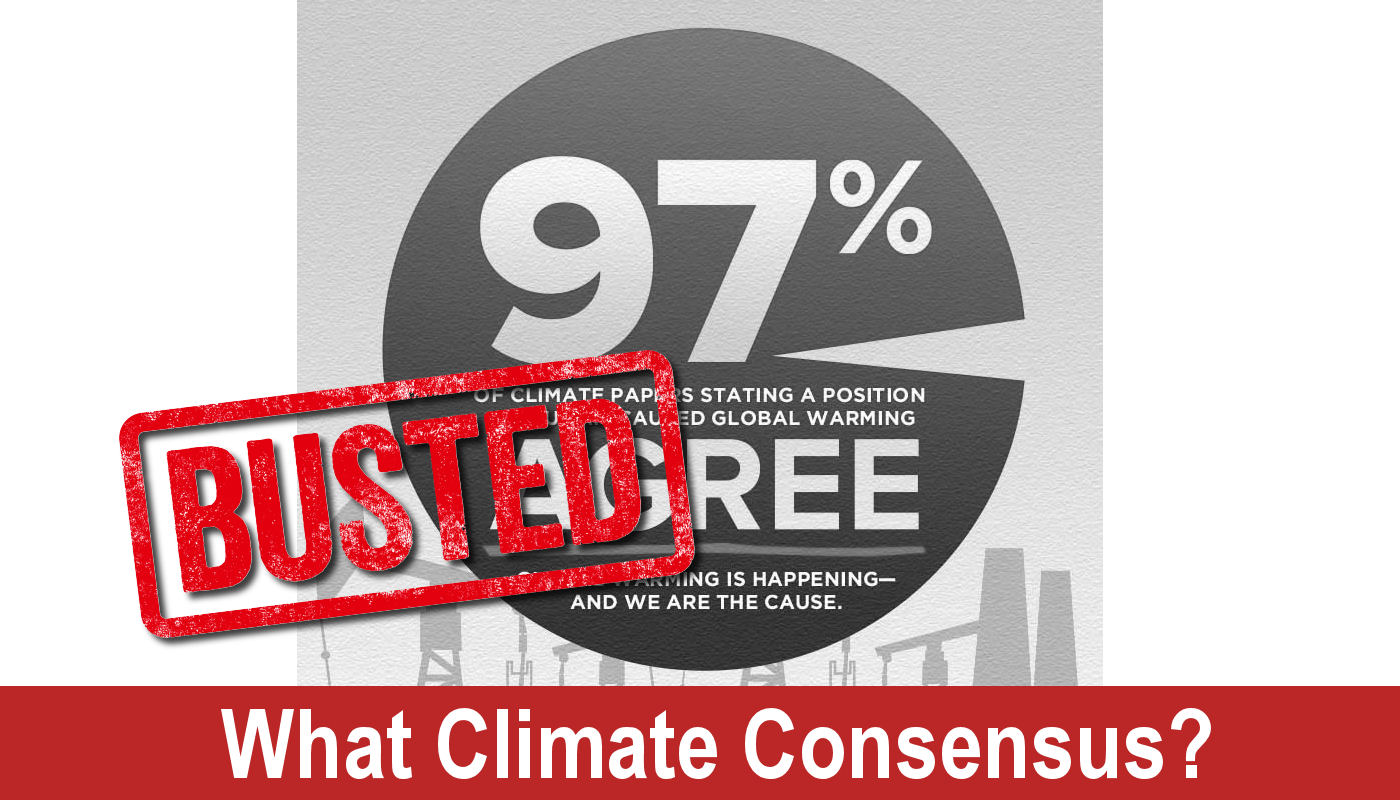An article published at NewsBreak (NB) titled, Scientists issue urgent warning about mysterious ‘cold blob’ in the ocean: ‘Most likely underestimated’ claims that a “mysterious cold blob” in the Atlantic Ocean signals an impending collapse of the Atlantic Meridional Overturning Circulation (AMOC), which could have “catastrophic” consequences. This claim is, at best, misleading. In reality, the AMOC is not weakening at an unprecedented rate, nor is it on the brink of collapse—long-term data and historical trends do not support such dire predictions.
As seen above in a satellite data derived image from NASA in 2018, the “cold blob” has been around awhile.
The NB article states, “The decline of the AMOC system is most likely underestimated by current climate models, and its collapse could bring devastating climate changes.” However, this assertion relies heavily on speculative and notably flawed climate models rather than observational data.
The NB articles is based on and cites a recent study published in the Proceedings of the National Academy of Sciences (PNAS) which claims that the AMOC is weakening due to climate change. However, like many similar studies, it relies on climate models with unverified assumptions about how the AMOC works and what drives changes in it, and climate model projections based on those assumptions. The study did not look at direct, long-term empirical observations.
For years, climate alarmists have warned about an imminent collapse of AMOC, yet real-world data tells a different story. As Climate at a Glance: Ocean Currents highlights, direct observational data shows no long-term weakening trend in AMOC. The supposed decline is based on incomplete datasets and short-term variability rather than robust, century-scale records. The RAPID array monitoring system in the Atlantic, shows no consistent trend of dramatic weakening. In addition, although the so-called cold blob south of Greenland has been cited before as an indicator of AMOC weakening, temperature variations in this region have multiple causes, not just AMOC changes. Natural ocean variability, changes in atmospheric circulation, and volcanic activity all contribute to regional temperature anomalies.
With approximately 40 years of satellite records, science is unable to determine at the present time whether the “cold blob” is a regular natural occurrence every few decades and whether the blob is driven by ocean currents or is a periodic or recent phenomenon occurring only off of Greenland, resulting from inflows from melting ice.
Furthermore, historical research shows that similar cold anomalies have appeared in the Atlantic before, long before industrial CO₂ emissions became a factor. If a cooling region in the North Atlantic were a reliable indicator of AMOC weakening, then AMOC would have supposedly been on the verge of collapse multiple times over the past several centuries—yet it never did.
Perhaps the most glaring problem with the AMOC collapse narrative is that it keeps changing. Over the past two decades, the same climate activists who now claim AMOC is weakening due to global warming have previously argued the opposite—that warming would strengthen AMOC. As pointed out in Climate Realism: Climate Activists Flip-Flop on Ocean Currents Yet Again, scientists and the mainstream media have repeatedly shifted their position, sometimes arguing that AMOC is accelerating, sometimes claiming it’s slowing and on the verge of collapse, and at other times saying the speed of the current has not changed much at all.
For example, in 2005, NASA reported that AMOC was slowing down, but by 2010, researchers were claiming AMOC was actually speeding up due to Arctic ice melt. Then, in 2015, the narrative flipped back to AMOC slowing, only to shift again in 2018 when another paper suggested that AMOC had been recovering, and the previous conclusions might have been overstated.
When it comes to the AMOC, as with the constantly shifting narrative on monsoons, every time a new study is published, the narrative changes, but regardless of the change, the cause is always attributed to human activity and the results are always going to be catastrophic if governments don’t act. But what are we acting to prevent when the anticipated disaster constantly shifts? Is the AMOC speeding up, slowing down, or remaining about the same? Pick your study.
If AMOC were truly experiencing an unprecedented, human-caused collapse, the narrative shouldn’t be shifting with every new study, but rather the studies should produce consistent results.
The primary problem with the PNAS study and the NB article is the reliance on climate model projections, even though the models past projections have been consistently flawed and the modelers themselves admit, they don’t accurately portray the key metric they were designed to project, that is, global temperatures. As we’ve reported at Climate Realism repeatedly, here, here, and here for example, climate models have consistently overestimated warming rates and failed to account for natural climate variability.
The media’s track record on climate predictions is littered with failed doomsday scenarios. Just a few decades ago, headlines were filled with warnings of an impending ice age. Now, every observable natural fluctuation in weather or climate is blamed on human activity and portrayed as an existential crisis. The NB article fits this pattern, presenting a speculative study as if it were undeniable proof of an impending disaster.
Rather than presenting a balanced view of the scientific debate, the media continually pushes alarming narratives intended not to inform but rather to generate fear. Yet the stories almost always lack empirical backing or even fly in the face of what data actually show. The reality is there is no evidence that AMOC is on the verge of collapsing. Indeed, based on the current state of knowledge about the AMOC, science can’t even say whether it is changing at all, much less whether it is speeding up or slowing down. Readers deserve better than another round of speculative climate doom predictions based on the unverified alarming study de jour.


